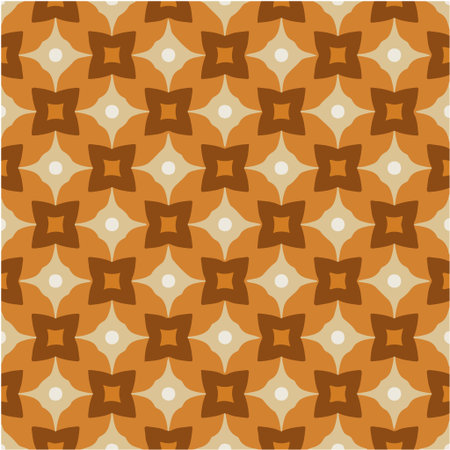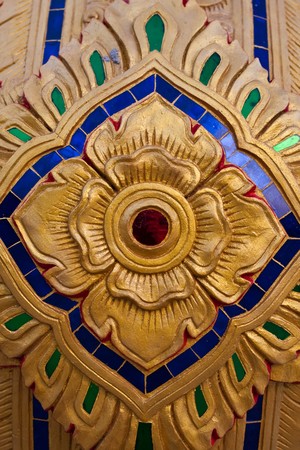The Rich Legacy of Indian Flooring Traditions
India’s rich heritage in flooring design is a vibrant testament to the country’s diverse cultures, climates, and centuries-old craftsmanship. From the ornate havelis of Rajasthan to the serene homes of Kerala, traditional flooring styles have always reflected both local artistry and practical needs. Each region of India boasts its own distinctive patterns, materials, and installation techniques, shaped by geographical conditions and cultural preferences. For instance, the cool marble floors of North India were chosen not just for their aesthetic appeal but also for their ability to moderate indoor temperatures during scorching summers. In contrast, terracotta tiles are commonly found in South Indian homes due to their earthy charm and suitability for humid climates. These choices are deeply rooted in history—ancient texts like the Vastu Shastra have guided artisans in creating harmonious living spaces through careful selection of floor patterns and materials. Whether it is the intricate inlay work seen in Mughal palaces or the colourful mosaic tiles that adorn Gujarati courtyards, Indian flooring designs continue to celebrate a legacy of innovation and regional identity, passing on time-honoured skills from one generation to the next.
Tiles: Patterns, Motifs, and Modern Interpretations
Indian tile craftsmanship is an ancient art form that seamlessly fuses tradition with innovation. From the bustling streets of Jaipur to the serene courtyards of Kerala, tiles have always held a special place in Indian flooring design. The most iconic patterns include Jaali—intricate latticework that reflects both beauty and utility by allowing air and light to filter through. Geometric florals, inspired by Mughal architecture and Rajasthani palaces, adorn homes with symmetry and elegance.
Classic Indian Tile Motifs
| Motif/Pattern | Region of Origin | Cultural Significance |
|---|---|---|
| Jaali (Lattice) | Northern India | Symbolizes protection and divine connection |
| Kalamkari | Andhra Pradesh | Depicts stories from mythology using natural dyes |
| Dholpur Red | Rajasthan | Represents royalty and grandeur in palatial settings |
| Mughal Florals | Delhi/Agra | Emphasizes harmony and the beauty of nature |
Modern Approaches in Indian Homes
Today’s Indian homeowners are blending heritage with contemporary aesthetics. Ceramic tiles featuring traditional designs are now manufactured using advanced technology for enhanced durability. Many opt for digitally printed tiles that replicate hand-painted motifs, making it affordable for middle-class families to embrace cultural artistry in their daily lives. Urban apartments frequently showcase a fusion of minimalistic layouts with bold ethnic patterns, reflecting India’s dynamic lifestyle.
Popular Tile Choices in Contemporary Settings
- Porcelain tiles mimicking age-old encaustic styles for drawing rooms and pooja spaces
- Cement tiles in colourful Chettinad-inspired patterns for verandahs and kitchens
- Mosaic-tiled accent walls echoing temple art in urban living areas
The Blend of Functionality and Artistry
The enduring appeal of Indian tile work lies in its ability to combine functionality with artistic expression. Easy maintenance, cooling properties during hot summers, and non-slip finishes have made traditional tiles ideal for modern Indian households. As families seek to reconnect with their roots while adapting to contemporary needs, the legacy of Indian tile craftsmanship continues to evolve gracefully within every home.

3. Marble Marvels: From Rajasthan Quarries to Living Rooms
Marble has always been the crown jewel of Indian traditional flooring, symbolising luxury, heritage, and enduring beauty. The story of Indian marble starts in the ancient quarries of Rajasthan, especially Makrana and Ambaji—names deeply etched in the architectural history of India.
The Legacy of Makrana and Ambaji Marble
Makrana marble, famously used in the construction of the Taj Mahal, is celebrated for its pristine white hue and exceptional durability. Ambaji marble, quarried from Gujarat’s Aravalli Range, is equally revered for its subtle texture and unique veining patterns. Both varieties are prized across India for their ability to withstand time while retaining their lustre.
Traditional Craftsmanship Techniques
The traditional process begins with expert quarrying, followed by meticulous hand-cutting and finishing. Artisans employ age-old techniques such as mirror polishing (jhadoo), intricate inlay work (pietra dura), and fine edge profiling to highlight the natural beauty of each slab. In many Rajasthani homes and palaces, you will find floors laid out in geometric arrangements or floral motifs—a testament to generations of skilled craftsmanship.
Integration into Modern Indian Interiors
In contemporary Indian homes, marble continues to be a preferred flooring choice, blending tradition with modernity. Homeowners now opt for large-format tiles and seamless installations that evoke grandeur but also suit minimalist aesthetics. Designers often mix Makrana or Ambaji marble with brass inlays or wooden borders for a sophisticated fusion look, reflecting both heritage and innovation. The cool touch underfoot during sultry Indian summers remains an unmatched comfort—a practical reason why marble endures as a flooring favourite.
4. Mosaic Artistry: The Timeless Surfaces of Bharat
India’s rich tradition of mosaic flooring is a true testament to its cultural diversity and innovative craftsmanship. From the sacred corridors of Kanchipuram temples to the opulent havelis of Rajasthan, mosaic surfaces have adorned Bharat’s most cherished spaces for centuries. This artistry is not just about aesthetics—it’s an engineering marvel that combines durability with intricate design, achieved by fusing materials like stone, glass, and ceramic into seamless patterns.
The Mosaic-Making Process: Step-by-Step Precision
The journey of crafting a mosaic floor begins with a well-engineered sub-base, ensuring longevity even in India’s varied climates. Skilled artisans then hand-select tesserae—small chips of marble, granite, or coloured glass—each chosen for its texture, reflectivity, and hue. These pieces are carefully laid out to form motifs inspired by everything from Mughal geometry to South Indian kolams.
| Material Used | Region/Tradition | Typical Motifs | Unique Features |
|---|---|---|---|
| Marble & Granite Chips | Rajasthan, Gujarat | Floral, Geometric Jaalis | High Polishing, Durability |
| Coloured Glass | Kolkata, Varanasi Temples | Peacock, Lotus, Mandalas | Lustrous Shine, Vibrant Hues |
| Ceramic Tiles | Mumbai Urban Homes | Abstract, Modern Patterns | Easy Maintenance, Customisable Shapes |
Cultural Narratives: From Devotion to Design Evolution
Mosaic floors are more than a surface—they narrate stories. In temples like Meenakshi Amman, each motif signifies divinity; in colonial-era bungalows across Kolkata and Mumbai, mosaics blend Art Deco with traditional Indian iconography. Today’s urban designers reimagine these classics for flats and villas, merging past elegance with contemporary minimalism.
Mosaic Flooring: Where Heritage Meets Innovation
The beauty of Indian mosaic lies in its ability to adapt—whether it is the cool comfort of marble in summer or the vibrant playfulness of glass tiles in modern apartments. Each installation is a collaborative effort: master craftsmen (karigars) work closely with architects and homeowners to optimise pattern layout and material selection for both resilience and beauty. With sustainable sourcing gaining traction across India, many projects now repurpose broken tiles or waste glass—proving that ancient techniques can lead modern eco-friendly trends.
5. Integrating Vastu and Regional Aesthetics in Flooring Choices
Indian traditional flooring design is deeply intertwined with the principles of Vastu Shastra, as well as with the unique cultural preferences that vary from region to region. When selecting flooring for homes or commercial spaces, many Indians consider both the spiritual harmony prescribed by Vastu and the visual identity rooted in their local heritage.
Vastu Shastra: Guiding Layout and Material Selection
According to Vastu Shastra, the ancient Indian science of architecture, the choice of flooring material and its layout can significantly influence the energy flow within a space. For instance, marble is often favoured in puja rooms and living areas for its purity and cooling effect, while earthy terracotta tiles are recommended in southern states due to their grounding properties and suitability for warm climates.
Colour Symbolism and Directional Alignment
The colour palette of traditional floors is also chosen with care. Light shades such as off-white or cream are believed to promote peace and clarity, especially when placed in northern sections of a home. In contrast, vibrant hues like red or yellow are used judiciously to energise spaces but always aligned with Vastu guidelines. The direction in which tiles or mosaic patterns are laid—whether diagonal, grid, or custom motifs—can further enhance positive vibrations according to local beliefs.
Regional Craftsmanship Meets Spiritual Practice
From the intricate Athangudi tiles of Tamil Nadu to the grand marble floors of Rajasthan’s havelis, each region showcases a blend of artisanal skill and spiritual intent. In Kerala, for example, oxide flooring not only reflects local climate adaptability but also echoes traditional aesthetics passed down through generations. Across India, homeowners often consult Vastu experts before installation, ensuring that floor designs support both beauty and cosmic balance.
This harmonious integration of Vastu Shastra and regional artistry ensures that Indian traditional flooring is more than just a visual statement—it becomes an essential element in fostering well-being, prosperity, and cultural continuity within any space.
6. Sustainable and Local Materials: The Future of Indian Flooring
As environmental awareness grows across India, a significant shift is taking place among contemporary builders and homeowners. Today, there is a renewed appreciation for sustainable and locally sourced materials in flooring design, deeply rooted in Indian tradition yet aligned with modern eco-consciousness. This approach not only pays homage to the artisanal legacy of tiles, marble, and mosaic but also ensures that floors are both aesthetically pleasing and environmentally responsible.
Revival of Regional Resources
Modern Indian flooring trends increasingly favour indigenous stones like Kota, Jaisalmer, and Shahabad, which have long been valued for their durability and natural beauty. Similarly, handmade terracotta tiles from Tamil Nadu or Athangudi cement tiles from Chettinad are making a strong comeback. By sourcing these materials locally, builders reduce transportation emissions while supporting regional craftspeople.
Eco-Friendly Craftsmanship Meets Contemporary Design
Today’s architects cleverly integrate age-old techniques—like lime plastering or traditional mosaic inlay—with minimalist, contemporary layouts. This fusion results in floors that celebrate Indian heritage without compromising on style or sustainability. Natural sealants and non-toxic finishes further ensure healthier indoor environments for Indian families.
Empowering Local Communities & Reducing Carbon Footprint
Choosing local materials for flooring does more than benefit the planet—it boosts rural economies by keeping traditional skills alive and providing livelihoods for artisans. The reduced reliance on imported stone or synthetic flooring significantly cuts the carbon footprint associated with home construction across urban and rural India alike.
A Vision for Sustainable Indian Homes
The future of Indian flooring lies in this harmonious blend of cultural pride and ecological responsibility. As more Indians seek homes that reflect both their identity and care for the environment, eco-friendly regional materials will continue to define stylish, enduring spaces—carrying forward the rich craftsmanship of Indian traditional flooring into the next generation.


